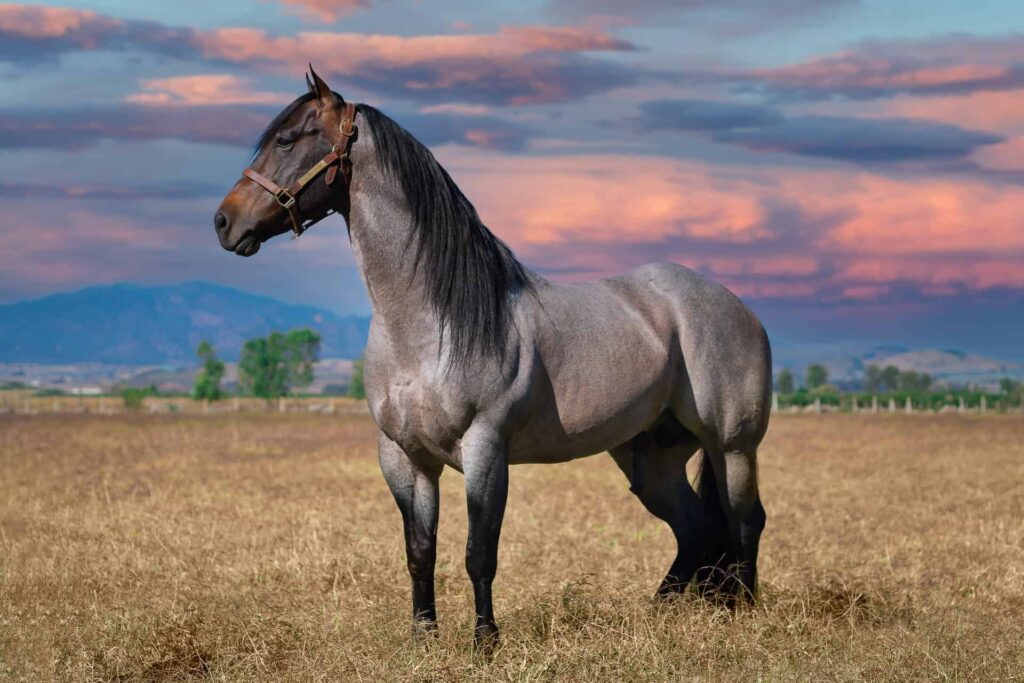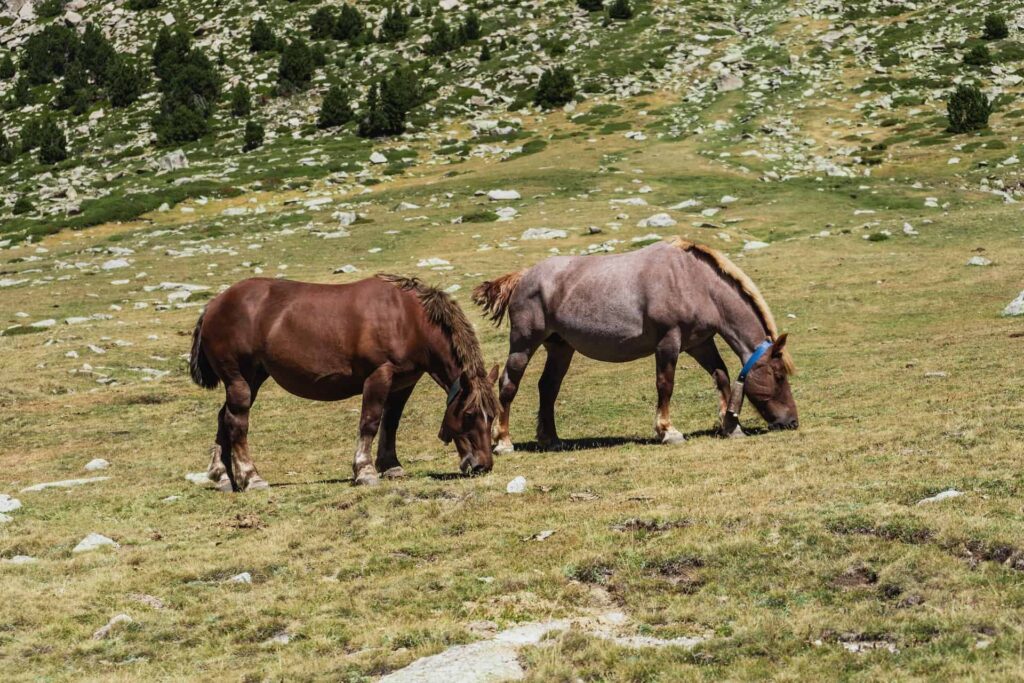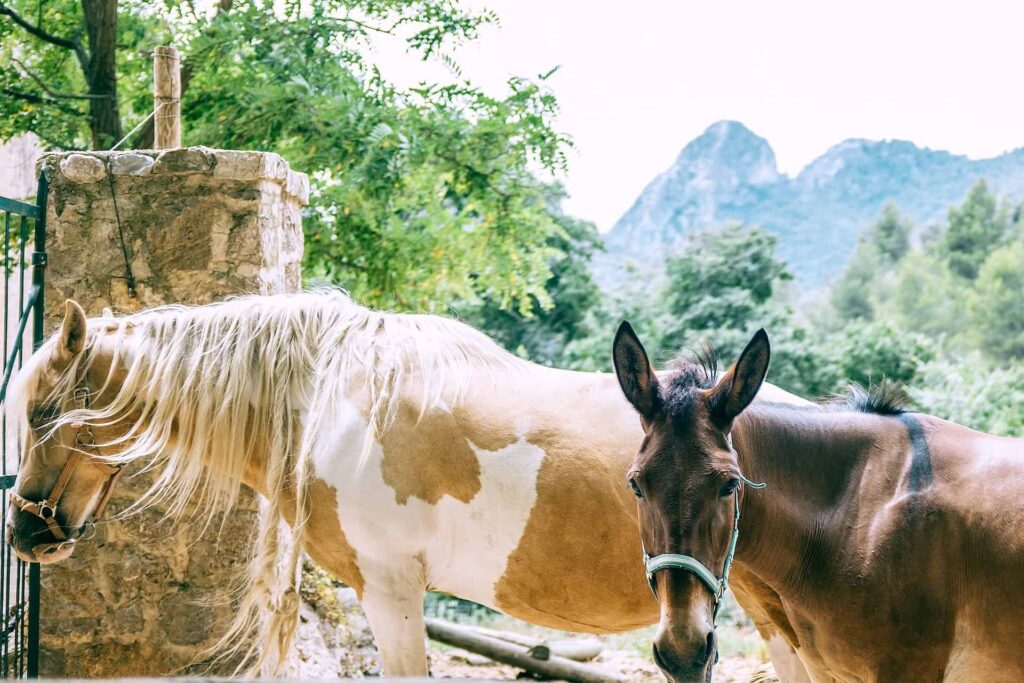A stallion is a male horse that has not been gelded (castrated). Renowned for their strength, grace, and beauty, these magnificent creatures evoke a sense of majesty and power. As one delves deeper into understanding the world of stallions, it becomes evident that there is more to these animals than just their striking appearance.
Being the male counterpart in the equine world, stallions hold the responsibility of breeding and continuing the lineage of their breed. Their physical characteristics, such as size, color, and conformation, can be dominant traits passed onto their offspring. The behavior of a stallion is also distinct compared to that of geldings and mares, with heightened territorial instincts and a dominant demeanor often observed in these horses.
Caring for a stallion requires knowledge and commitment from their human caretakers, as they have ongoing health and training needs to optimize their performance and well-being. They also play significant roles in various equestrian disciplines, ranging from racing and dressage to showjumping and endurance riding.
Key Takeaways
- Stallions are ungelded male horses responsible for breeding and continuing the lineage of their breed.
- Their physical characteristics, behavior, and care needs are distinct compared to geldings and mares.
- Stallions play important roles in various equestrian disciplines and require specialized training and care.
Definition of a Stallion
A stallion is an uncastrated adult male horse that is primarily utilized for horse breeding purposes. Known for their strong build, impressive speed, and powerful endurance, stallions possess bold physical characteristics and a notable presence in their environment.
Stallions exhibit a range of behaviors and temperaments, from calm and gentle to spirited and assertive. A stallion’s temperament is often dictated by its breeding, genetics, and upbringing. Proper handling and management can help maintain a stallion’s temperament within acceptable levels, thereby creating a more harmonious relationship between the horse and its owner.
In the horse breeding industry, a well-bred stallion can significantly contribute to the quality of its offspring. Desirable characteristics such as conformation, athleticism, and personality traits are often heritable and passed down to future generations. This is why renowned breeding establishments pay particular attention to the lineage and traits of their breeding stock.
While the primary purpose of many stallions is for breeding, some are also used in various equestrian disciplines such as racing, dressage, showjumping, and eventing. They can also serve as excellent working and recreational horses, demonstrating their versatility and adaptability in various aspects of the equine world.
In summary, a stallion is a vital component in the equine industry, contributing not only to the preservation and enhancement of various horse breeds but also to the world of equestrian sports and activities. Their unique combination of strength, agility, and elegance make them an asset to breeders and horse enthusiasts alike.
Physical Characteristics of a Stallion
Body Structure
A stallion is a male horse that has not been castrated, exhibiting strong features and a muscular build. They typically have broad chests, well-defined withers, and solid legs with strong joints. The head of a stallion is expressive, with wide-set eyes and alert ears indicating its temperament.
Stallions possess more defined muscles compared to mares and geldings, due to the influence of testosterone. The neck is often thicker and arched, adding to their overall powerful appearance. Their height and weight vary based on the breed, ranging from small pony breeds to large draft horses.
Coat and Colors
A stallion’s coat exhibits a wide range of colors and patterns. The most common coat colors are:
- Bay: A reddish-brown coat with a black mane, tail, and points (ears, legs, and muzzle)
- Chestnut: A reddish or golden brown coat without black points, varying from light to dark shades
- Black: A pure black coat without any red or brown hair, true black is relatively rare in horses
Other coat colors found in stallions include:
- Gray: A mix of white and colored hairs, appearing lighter in color as the horse ages
- Palomino: A golden coat with a white or light cream mane and tail
- Dun: A sandy or dull tan coat with dark points and primitive markings such as a dorsal stripe, zebra stripes on the legs, and shoulder bars
Stallions can also have various coat patterns, including:
- Pinto: A combination of white and another base coat color, classified into two major patterns, tobiano and overo
- Appaloosa: A distinct spotted pattern including leopard, snowflake, and blanket variations
- Roan: An even mix of white hairs with a base coat color, producing a uniform speckled or heathered appearance
These are just a few examples of the many coat colors and patterns found in stallion horses. Each breed has its own specific range and characteristics, contributing to the incredible diversity seen in the equine world.
Behavior of a Stallion
Interactions With Other Horses
Stallions, as adult male horses, often display dominant behavior towards other horses. They can be territorial and may defend their space aggressively. In a herd setting, stallions establish a hierarchy with other members, which can include challenging other stallions for dominance. Submissive horses may demonstrate their submission by lowering their head or moving away.
Social grooming is another common interaction among stallions. They might groom each other by gently nibbling or scratching at the hair, especially on the neck. This behavior helps to establish bonds, maintain social relationships, and keep the coat clean and healthy.
Breeding Behavior
During the breeding season, stallions exhibit specific behaviors to attract and mate with mares. They may show off by prancing, rearing, and making various vocalizations, such as nickering or squealing. The Flehmen response, in which the stallion lifts its head and curls its upper lip, enables them to detect pheromones released by mares in estrus.
Once the stallion senses a receptive mare, it may perform courtship behaviors such as sniffing the mare’s genital area, nuzzling her flank, or even striking softly with its front legs. If the mare reciprocates interest, the stallion will mount her for mating. However, if the mare shows disinterest, she may kick or bite the stallion, indicating her refusal.
Stallion management: It is crucial for horse owners to manage stallions responsibly during the breeding season. This can involve separating them from mares to avoid aggressive behavior or unplanned breeding. Additionally, providing a stable routine with consistent handling and proper socialization can help to maintain a well-mannered stallion.
Health and Care of a Stallion
Diet
A stallion requires a well-balanced diet to maintain optimal health and performance. It is important to provide them with high-quality forage, such as hay or pasture, as the foundation of their diet. In addition, a stallion may need supplemental concentrates, such as grains or pelleted feeds, to meet their energy, protein, and nutrient requirements.
Ensure that the stallion always has access to clean, fresh water. Monitor their body condition closely, as both underweight and overweight stallions can suffer from health issues.
Medical Needs
Regular veterinary care is essential for stallions. Schedule routine checkups, vaccinations, and dental care to prevent and detect potential health problems early. Promptly address any concerns, as early intervention increases the chances of successful treatment.
Parasite control is crucial, so work with your veterinarian to develop an effective deworming program. Additionally, stallions should have their hooves trimmed and cared for by a professional farrier every 6-8 weeks to prevent lameness or hoof issues. Keep a close eye on the stallion’s overall well-being, and notify your veterinarian if you notice any changes in behavior or appearance that may indicate illness.
Training and Use of Stallions
Stallions require specialized training to effectively perform various tasks. This section briefly discusses riding, racing, and working tasks.
Riding
Training a stallion for riding begins with the groundwork to build trust and communication skills. Then, the trainer introduces the saddle and bridle gradually to get the stallion comfortable with wearing them. The training process includes:
- Basic commands: Walk, trot, canter, and stop
- Advanced commands: Collection, extension, and lateral movements
- Familiarization with obstacles and various environments
Racing
Stallions are often trained for various racing disciplines, such as Thoroughbred racing, Standardbred racing, and Arabian racing. Key aspects of race training include:
- Conditioning: Building the horse’s stamina, strength, and speed
- Galloping: Teaching the horse proper galloping techniques, such as:
- Breezing: running at a moderate speed
- Hand galloping: slower, controlled pace
- Starting gate: Acclimating the stallion to the starting gate by teaching them to enter, stand, and exit
- Race strategy: Teaching the horse to respond to jockey cues for pace changes and navigation
Working Tasks
Stallions can be trained to perform various working tasks, such as driving, police work, and agricultural tasks. A few examples include:
- Driving: Teaching the stallion to pull carts, wagons, or carriages
- Ground driving: Basic commands while controlling the horse from behind
- Harness and vehicle training: Introducing the horse to harness and vehicles
- Police work: Training a stallion for patrol and crowd control
- Desensitization: Exposure to various stimuli, such as noises, lights, and unfamiliar objects
- Obedience: Ensuring the horse remains calm and follows commands in high-stress situations
- Agricultural tasks: Using a stallion for tasks like plowing, logging, or herding
- Equipment familiarization: Introducing the horse to necessary equipment
- Task-specific training: Tailored training for the specific agricultural job
In summary, stallions can be trained for various disciplines, including riding, racing, and working tasks. Careful, consistent training builds a strong foundation for these horses to succeed and excel.
Frequently Asked Questions
What is the difference between a stallion and a regular horse?
A stallion is an adult male horse that has not been castrated, while a regular horse can refer to any horse regardless of sex or age. Stallions are known for their strength, speed, and competitive nature, whereas regular horses can have different characteristics depending on their gender, age, and breed.
What is the opposite gender of a stallion?
The opposite gender of a stallion is a mare, which is an adult female horse. Mares typically give birth to offspring, while stallions are responsible for siring them.
How do you say ‘stallion’ in Spanish?
In Spanish, the word for ‘stallion’ is ‘semental.’
What is the meaning of ‘stallion’ in Hindi?
In Hindi, the word for ‘stallion’ is ‘घोड़ा’ (ghoda), which generally means ‘horse.’ However, to clarify that it is specifically a stallion, one would say ‘नर घोड़ा’ (nar ghoda).
What is a female stallion called?
A female stallion does not exist, as the term ‘stallion’ is specific to male horses. An adult female horse is called a mare.
What are some synonyms for ‘stallion’?
Some synonyms for ‘stallion’ include steed, stud, and sire, though these terms may have slightly different nuances in specific contexts.
Last Updated on August 29, 2023 by Nate Dewsbury



